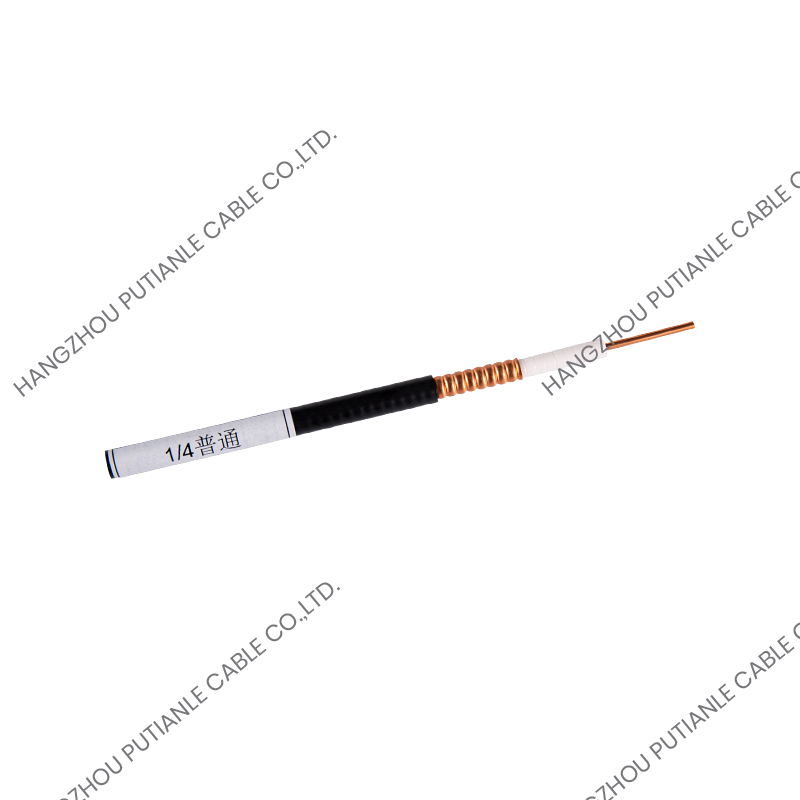RF (Radio Frequency) cables are integral components in the world of telecommunications and broadcasting, providing the necessary medium for transmitting high-frequency signals between devices and systems. These cables are specifically designed to carry electromagnetic signals within the radio frequency spectrum, typically ranging from 3 kHz to 300 GHz. From radio broadcasting to satellite communications, RF cables serve as the backbone of modern wireless communication systems, ensuring clear, stable, and efficient signal transmission.
The design of RF cables is crucial in maintaining the integrity of the signals transmitted over long distances. Due to the high frequency of the signals, even minor imperfections in the cable can lead to signal loss, interference, or degradation of performance.
Several types of RF cables are available, each designed for specific applications and environments. Some of the most common types include:
Coaxial cables are the most widely used type of RF cable. They consist of a central conductor, insulating material, a shielding layer, and an outer jacket. Coaxial cables are used for a variety of RF applications, including television signal transmission, internet connections, and radio communications. They are popular due to their excellent shielding, which prevents signal interference and ensures consistent performance.

Twinaxial cables are similar to coaxial cables but consist of two central conductors instead of one. These cables are used in applications where differential signaling is required, such as in high-speed data transmission. Twinaxial cables are commonly used in high-frequency applications that demand low loss and high performance.
Semi-rigid cables are typically used in applications that require precise control of the cable’s shape and position. These cables feature a solid metal conductor surrounded by an insulating layer, and they are typically more resistant to signal loss compared to other types. Semi-rigid cables are often used in high-frequency RF systems, such as in test equipment, military applications, and radar systems.
Flexible RF cables are designed to be highly pliable, allowing them to bend and flex without compromising performance. They are used in applications where cables need to be routed through tight spaces or where frequent movement is required. These cables are often used in mobile communication systems, satellite dishes, and antenna systems.
RF cables come with several distinctive features that make them suitable for high-frequency signal transmission:
RF cables are designed to minimize signal loss during transmission. Low-loss cables are essential in applications that require long-distance signal transmission, such as satellite communications and broadcasting.
To ensure that the signals are not degraded by external interference, RF cables are equipped with shielding that blocks external electromagnetic interference (EMI). This shielding helps prevent noise from corrupting the transmitted signal.
RF cables are capable of handling signals across a wide range of frequencies. This makes them versatile for a variety of applications, from low-frequency radio transmission to high-frequency satellite and radar systems.
Given the various environments in which RF cables are used, they are designed to be durable and flexible. They are resistant to environmental factors such as UV radiation, moisture, and temperature fluctuations, ensuring longevity and reliability.
RF cables are designed to maintain a specific impedance, typically 50 ohms or 75 ohms, depending on the application. Impedance matching ensures that the cable does not introduce signal reflections or distortions that could lead to performance degradation.
RF cables are critical in many modern communication systems, ensuring that high-frequency signals are transmitted effectively and with minimal loss. Below are some of the key applications of RF cables:
RF cables are commonly used in telecommunications to connect base stations, antennas, and other components of mobile and fixed-line networks. These cables ensure stable and reliable signal transmission for mobile phones, internet data, and other communication services.
In the broadcasting industry, RF cables are used to connect transmission equipment, antennas, and receivers for radio and television broadcasts. They play a vital role in ensuring the quality of the broadcast signal and preventing interference.
Satellite systems rely heavily on RF cables to transmit signals between the ground station and the satellite in orbit. These cables must be able to handle high-frequency signals over long distances, making them essential for satellite communication systems used in television, internet, and military applications.
RF cables are used extensively in military applications, such as radar systems, communications equipment, and missile guidance systems. Their ability to transmit signals accurately and reliably is critical for mission success in defense operations.
In laboratories and testing environments, RF cables are used to connect testing instruments to devices under test (DUTs). These cables help accurately measure signal characteristics and ensure that the equipment being tested meets the required specifications.


 中文简体
中文简体 English
English Español
Español














